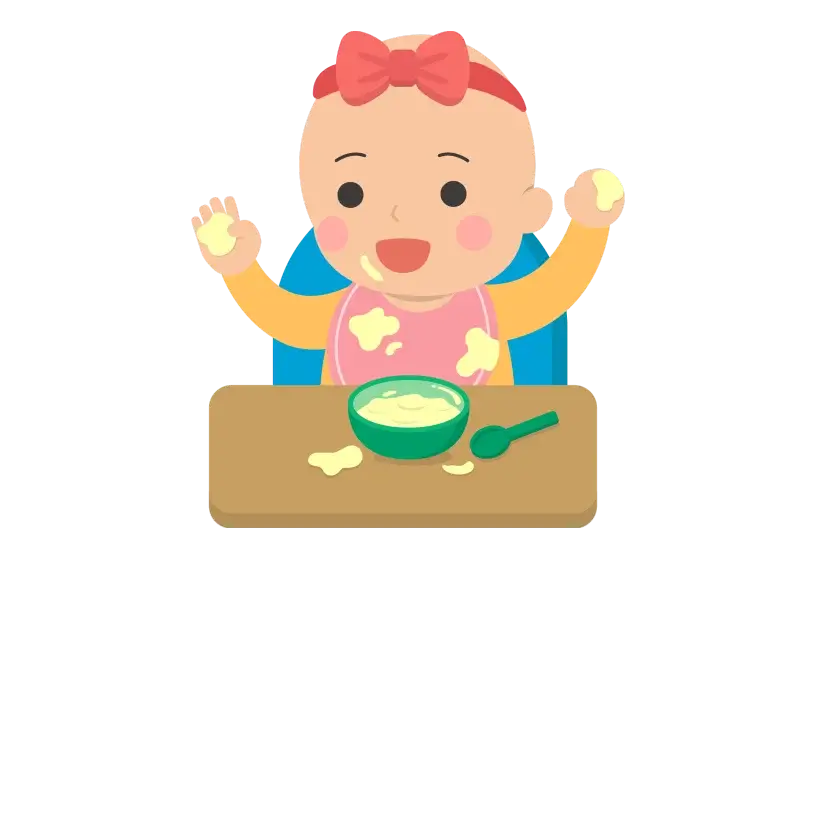Menu

As your tiny baby approaches their second birthday, you’re witnessing remarkable transformations in their development. By their 23rd month, they may engage in activities like walking, running, imitating you, and perhaps even mastering the art of throwing tantrums. Their growing vocabulary and communication skills might also surprise you.
These changes can leave you wondering what to expect from your 23-month-old, especially as they become more aware of their surroundings and assert their independence. It’s normal for toddlers at this stage to exhibit sudden behavioural shifts and struggle with newfound independence. Read on as we provide insights into everything you can expect during your toddler’s 23rd month.
As your baby approaches their upcoming birthday, they may exhibit signs of opposition and rebellion, leaving you puzzled about what might be causing these behaviours. However, it’s essential to understand that this challenging phase is not a reflection of your parenting skills but rather a natural part of your baby’s developmental stage.
Your little one may become inconsolable and fussy over seemingly trivial matters, only to quickly return to their usual self. You must remain calm during these episodes as your baby observes and learns from your reactions to their tantrums and mood swings.
By staying patient and composed, you’re helping your child sail through this developmental phase and setting a positive example for them to follow.
According to CDC’s guidelines, at 23 months old, your child’s weight and height are important indicators of their growth and development. On average, girls typically weigh around 25.9 pounds and measure about 33.7 inches tall, while boys tend to weigh slightly more at 26.3 pounds and measure approximately 34.2 inches in height.
However, it’s essential to remember that every child is unique, and as long as your 23-month-old falls within the expected range on the growth chart used by your paediatrician, they’re growing as they should be.
At 23 months old, your child’s language skills rapidly develop, but they may still struggle to communicate everything they want, leading to tantrums. It’s important to be patient and understanding during these outbursts.
Your child’s separation anxiety may intensify around this age as they become more aware of your absence. They may throw tantrums or cling to you when you try to leave. It’s important to remain calm and consistent, reassuring them that you’ll return. Keep goodbyes short and sweet, and provide specific details about when you’ll be back.
Your toddler may start screaming more as they explore their emotions and experiences. Their limited vocabulary may not always be enough to express how they feel, leading to outbursts of screams, whether they’re happy, sad, frustrated, or excited. And don’t worry too much – screaming is a normal part of toddler development, and most children grow out of it as they learn more words.
Around this age, your child may start to throw things to explore and learn, but it can be messy and unsafe. Show them the right places to throw soft toys and balls, and set clear rules about throwing objects at people or pets. Redirect them if they throw inappropriately, and supervise mealtime to prevent food throwing.
Your child can enjoy a wide variety of foods, so offering them a balanced diet that includes a variety of nutritious options is beneficial. Each meal should contain a mix of food groups to ensure they receive the necessary nutrients for growth and development.
Ensure your child receives a portion of animal foods like milk, dairy, eggs, meat, fish, or poultry daily, along with legumes such as chickpeas, lentils, peas, or nuts, and plenty of orange or green vegetables and fruits. Adding oil or fat to their meals provides essential energy for their active lifestyle.
For snacks, nutritionists advise choosing healthy choices like fresh fruits, which provide vitamins, minerals, and fibre without added sugars or unhealthy fats. By offering diverse nutritious foods, you can help support your child’s health and well-being as they grow and explore new tastes and textures.
At 23 months old, experts recommend your child typically needs 11 to 14 hours of sleep each day. They may begin transitioning to just one nap per day, which could lead to adjustments in your daily schedule. The morning nap is typically the one to go; the afternoon nap becomes longer, or the bedtime shifts slightly earlier.
Fortunately, this transition usually occurs naturally.

Your child’s visual capabilities evolve significantly from 1 to 2 years old. At 23 months, they can notice intricate details and their depth perception develops. As a caregiver, you play a crucial role in providing pleasant and visually stimulating environments.
Engage your toddler with colourful picture books, interactive toys, and outings to varied settings like the park, grocery store, or a friend’s house, where they can explore and observe different sights.

By around 23 months, toddlers are not only comprehending simple commands but also starting to recognise the names of family members. While their language skills are still developing, they’re becoming more adept at nonverbal communication.
They enjoy engaging with sounds and laughter through children’s songs or playing with friends in the park. Encouraging their love for auditory experiences can further support their language development and overall cognitive growth.

As toddlers refine their language skills, they become more vocal about their food preferences. Introducing a variety of tastes and smells during meals or outings can help them expand their palate.
It’s common for toddlers to reject new foods initially, but consistent exposure can eventually lead to acceptance. Encourage descriptive language during meal times to help them articulate their experiences and develop an appreciation for different flavours and aromas.
It’s common for toddlers to reject new foods initially, but consistent exposure can eventually lead to acceptance. Encourage descriptive language during meal times to help them articulate their experiences and develop an appreciation for different flavours and aromas.

Toddlers may seem constantly on the move, but they still crave affection and reassurance from their caregivers. Show your love through cuddles and kisses, reinforcing their sense of security and emotional well-being.
According to Children Minnesota (The kid experts), ensuring your home is childproofed to create a safe environment for exploration. Address behaviours like hitting by teaching alternative ways to express emotions and setting clear boundaries when necessary, nurturing their social and emotional development alongside their physical exploration.

Your child’s visual capabilities evolve significantly from 1 to 2 years old. At 23 months, they can notice intricate details and their depth perception develops. As a caregiver, you play a crucial role in providing pleasant and visually stimulating environments.
Engage your toddler with colourful picture books, interactive toys, and outings to varied settings like the park, grocery store, or a friend’s house, where they can explore and observe different sights.

By around 23 months, toddlers are not only comprehending simple commands but also starting to recognise the names of family members. While their language skills are still developing, they’re becoming more adept at nonverbal communication.
They enjoy engaging with sounds and laughter through children’s songs or playing with friends in the park. Encouraging their love for auditory experiences can further support their language development and overall cognitive growth.

As toddlers refine their language skills, they become more vocal about their food preferences. Introducing a variety of tastes and smells during meals or outings can help them expand their palate.
It’s common for toddlers to reject new foods initially, but consistent exposure can eventually lead to acceptance. Encourage descriptive language during meal times to help them articulate their experiences and develop an appreciation for different flavours and aromas.

Toddlers may seem constantly on the move, but they still crave affection and reassurance from their caregivers. Show your love through cuddles and kisses, reinforcing their sense of security and emotional well-being.
According to Children Minnesota (The kid experts), ensuring your home is childproofed to create a safe environment for exploration. Address behaviours like hitting by teaching alternative ways to express emotions and setting clear boundaries when necessary, nurturing their social and emotional development alongside their physical exploration.
Fussiness: Pay attention to changes in your child’s crying patterns. If they cry more frequently or intensely than usual, it could indicate they’re uncomfortable or in pain. Listen for different types of cries, as they may vary depending on the cause of discomfort.
Changes in sleep patterns: Monitor your child’s sleep habits. If they’re having difficulty falling asleep, waking frequently during the night, or experiencing restless sleep, it may be a sign that they’re uncomfortable. Observe their sleep environment for any factors disrupting their rest, such as discomfort from teething or illness.
Changes in appetite: A decrease in appetite or refusal to eat may indicate your child experiencing discomfort, especially if accompanied by other symptoms like fussiness or irritability. On the other hand, an increase in appetite could also be a sign of discomfort if symptoms like diarrhoea or vomiting accompany it.
Changes in behaviour: Observe your child’s behaviour for any unusual signs. Look for increased clinginess, agitation, or withdrawal, as these may be indicators that they’re not feeling well. Pay attention to their interactions with others and any changes in their mood or temperament.
Rubbing or touching a specific body part: If your child is repeatedly rubbing or touching a particular area of their body, it could be a sign of discomfort or pain in that area. This may indicate issues like teething discomfort, an injury, or discomfort from illness.
Changes in mood or activity level: Your child may seem more lethargic or less interested in activities they usually enjoy. Pay attention to any changes in their activity level, such as decreased exploration or playfulness. These changes could indicate they’re not feeling well and are experiencing discomfort.

Toddlers around 23 months old are often able to feed themselves independently using their hands or utensils. This milestone signifies increased fine motor skills and independence in mealtime activities.

Some 23-month-olds may have developed the ability to self-soothe and fall back asleep independently if they wake up during the night. They’re learning to regulate their sleep patterns and promote better overall sleep quality.

At this age, toddlers typically engage in more interactive play with peers, showing an interest in sharing toys, taking turns, and initiating simple social interactions. This milestone marks the beginning of social development as your child learns to explore social situations, develop friendships, and understand the dynamics of group play.

Toddlers around this age are becoming more agile and coordinated, allowing them to independently bend down and pick up objects from the floor. This development signifies improved gross motor skills and body control, essential for everyday tasks and activities.

Many toddlers at this age are starting to use simple words and phrases to communicate their needs and desires. This milestone represents significant progress in language development as your child begins to express themselves verbally and understand basic language structures.

Toddlers around 23 months old may begin to make connections between the things they see in books, on TV, or in real life, demonstrating an increasing understanding of the world around them and the ability to apply knowledge from different sources.

By this age, toddlers can often understand and follow basic instructions or commands given by adults. This allows your child to participate more actively in daily routines, follow rules and directions, and engage in structured activities more independently.

Toddlers at 23 months old are becoming more expressive, demonstrating a wider range of feelings such as joy, frustration, excitement, and empathy. This milestone encourages your child to form deeper connections with others, understand social cues, and explore relationships more effectively.

Toddlers around 23 months old are often able to feed themselves independently using their hands or utensils. This milestone signifies increased fine motor skills and independence in mealtime activities.

Some 23-month-olds may have developed the ability to self-soothe and fall back asleep independently if they wake up during the night. They’re learning to regulate their sleep patterns and promote better overall sleep quality.

At this age, toddlers typically engage in more interactive play with peers, showing an interest in sharing toys, taking turns, and initiating simple social interactions. This milestone marks the beginning of social development as your child learns to explore social situations, develop friendships, and understand the dynamics of group play.

Toddlers around this age are becoming more agile and coordinated, allowing them to independently bend down and pick up objects from the floor. This development signifies improved gross motor skills and body control, essential for everyday tasks and activities.

Many toddlers at this age are starting to use simple words and phrases to communicate their needs and desires. This milestone represents significant progress in language development as your child begins to express themselves verbally and understand basic language structures.

Toddlers around 23 months old may begin to make connections between the things they see in books, on TV, or in real life, demonstrating an increasing understanding of the world around them and the ability to apply knowledge from different sources.

By this age, toddlers can often understand and follow basic instructions or commands given by adults. This allows your child to participate more actively in daily routines, follow rules and directions, and engage in structured activities more independently.

Toddlers at 23 months old are becoming more expressive, demonstrating a wider range of feelings such as joy, frustration, excitement, and empathy. This milestone encourages your child to form deeper connections with others, understand social cues, and explore relationships more effectively.
Engage your child in activities that improve hand-finger coordination, such as folding colourful paper, stacking blocks, or painting. These activities enhance motor skills and stimulate creativity and sensory exploration.
Set a positive example for your child by demonstrating kindness, sharing, and empathy. Encourage sharing by explaining the concept and praising your child when they exhibit this behaviour. Emphasise the importance of kindness and understanding in everyday interactions.
Respect and nurture your child’s individuality by providing opportunities that align with their personality traits. If your child is shy, gently encourage social interaction without pressure. For outgoing children, facilitate social opportunities to encourage their sociability. Be attentive to their needs and preferences, and seek guidance from healthcare providers if needed.
Encourage independence and confidence by allowing your child to choose books and participate actively during reading sessions. Let them turn the pages, predict the story’s progression, and engage in interactive elements like rhymes or repeated phrases. Celebrate their contributions and encourage a love for reading through positive reinforcement.
Significant progress in speaking skills is a major milestone for 23-month-olds! The Mayo Clinic notes that by age two, many children can typically say approximately 50 to 100 words, form two-word sentences, and even ask short questions! Additionally, they may demonstrate the ability to identify shapes or colours and complete sentences in familiar stories or songs.
Speech development differs among children; various factors can impact toddlers’ communication abilities. These may include oral impairments, hearing issues, developmental delays, or conditions such as Autism Spectrum Disorders (ASD) that can lead to delayed language development.
Remembering that every child is unique and may grow at their own pace is essential. If you have concerns about your child’s growth, it’s always a good idea to consult their pediatrician.
At this age, toddlers typically require 11 to 14 hours of sleep
Some typical milestones for a 23-month-old child include practising and refining motor, cognitive, and social skills. This can involve kicking a ball, stringing together words, and seeking approval from caregivers. While picky eating and tantrums may be common, they are part of the child’s development as they learn about themselves and how to interact with the world. Expect to see a lot of energy, opinions, and possibly some clinginess at this age.
Your 23-month-old may be clingy due to various reasons. At this age, toddlers are still developing their sense of independence while also experiencing separation anxiety. They may cling to familiar faces for security and reassurance. Changes in routine, transitions, or new environments can also trigger clinginess. It’s important to provide comfort and support while gently encouraging independence and reassuring your child during clinginess.
Significant progress in speaking skills is a major milestone for 23-month-olds! The Mayo Clinic notes that by age two, many children can typically say approximately 50 to 100 words, form two-word sentences, and even ask short questions! Additionally, they may demonstrate the ability to identify shapes or colours and complete sentences in familiar stories or songs.
Speech development differs among children; various factors can impact toddlers’ communication abilities. These may include oral impairments, hearing issues, developmental delays, or conditions such as Autism Spectrum Disorders (ASD) that can lead to delayed language development.
Remembering that every child is unique and may grow at their own pace is essential. If you have concerns about your child’s growth, it’s always a good idea to consult their pediatrician.
At this age, toddlers typically require 11 to 14 hours of sleep
Some typical milestones for a 23-month-old child include practising and refining motor, cognitive, and social skills. This can involve kicking a ball, stringing together words, and seeking approval from caregivers. While picky eating and tantrums may be common, they are part of the child’s development as they learn about themselves and how to interact with the world. Expect to see a lot of energy, opinions, and possibly some clinginess at this age.
Your 23-month-old may be clingy due to various reasons. At this age, toddlers are still developing their sense of independence while also experiencing separation anxiety. They may cling to familiar faces for security and reassurance. Changes in routine, transitions, or new environments can also trigger clinginess. It’s important to provide comfort and support while gently encouraging independence and reassuring your child during clinginess.
1. Center for Disease Control and Prevention: Birth to 24 months: Boys: Length-for-age and Weight-for-age percentiles
2. Center for Disease Control and Prevention: Birth to 24 months: Girls: Length-for-age and Weight-for-age percentiles
3. Children Minnesota: The Senses and Your 1-to-2-Year-Old
4. Healthy Children: Language Delays in Toddlers: Information for Parents
5. Mayo Clinic: Infant and toddler health
6. Sleep Foundation: How Much Sleep do Babies and Kids Need?
7. Unicef: Feeding Your Baby 1-2 Years
© Mindsmaking 2024